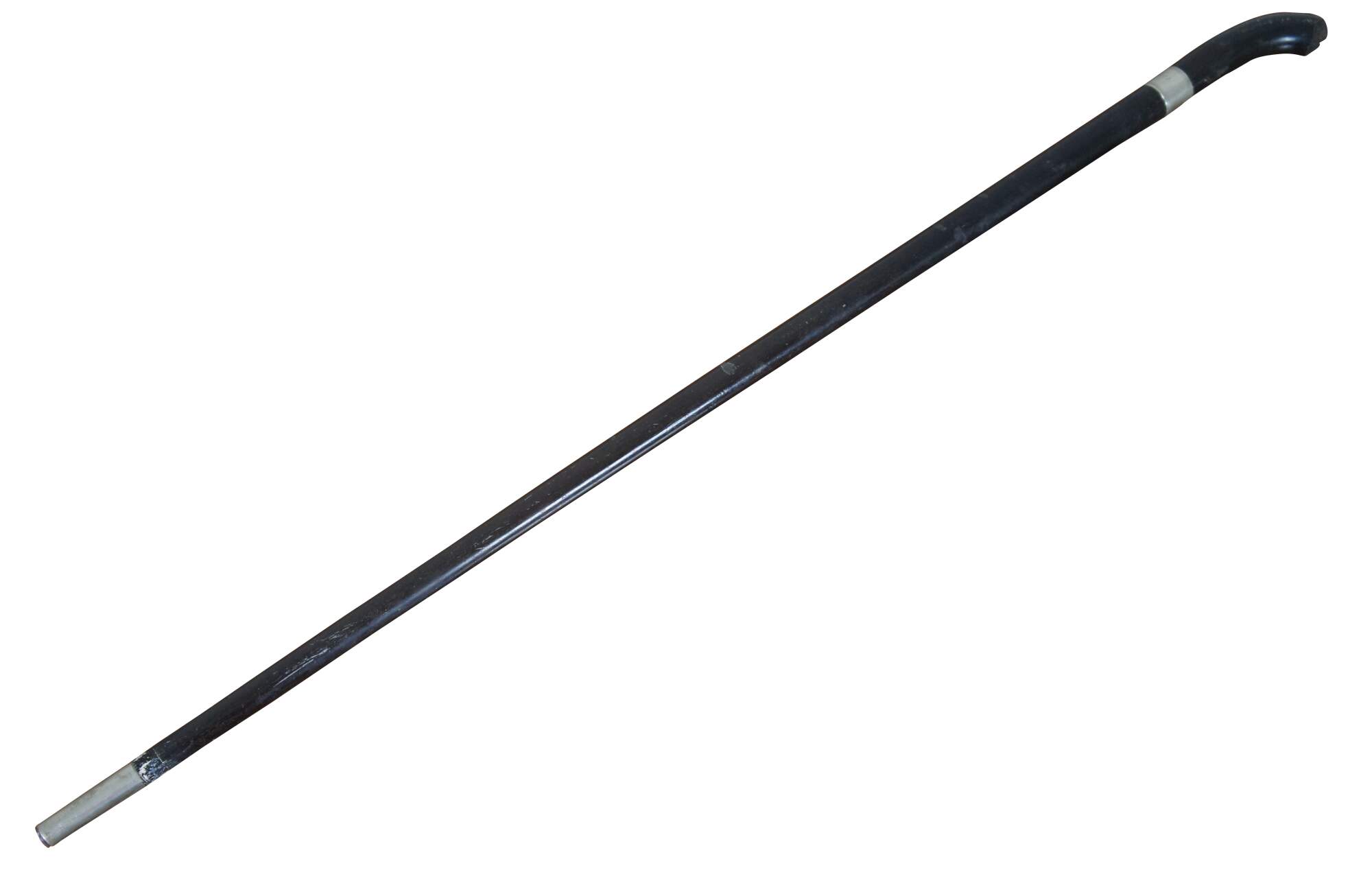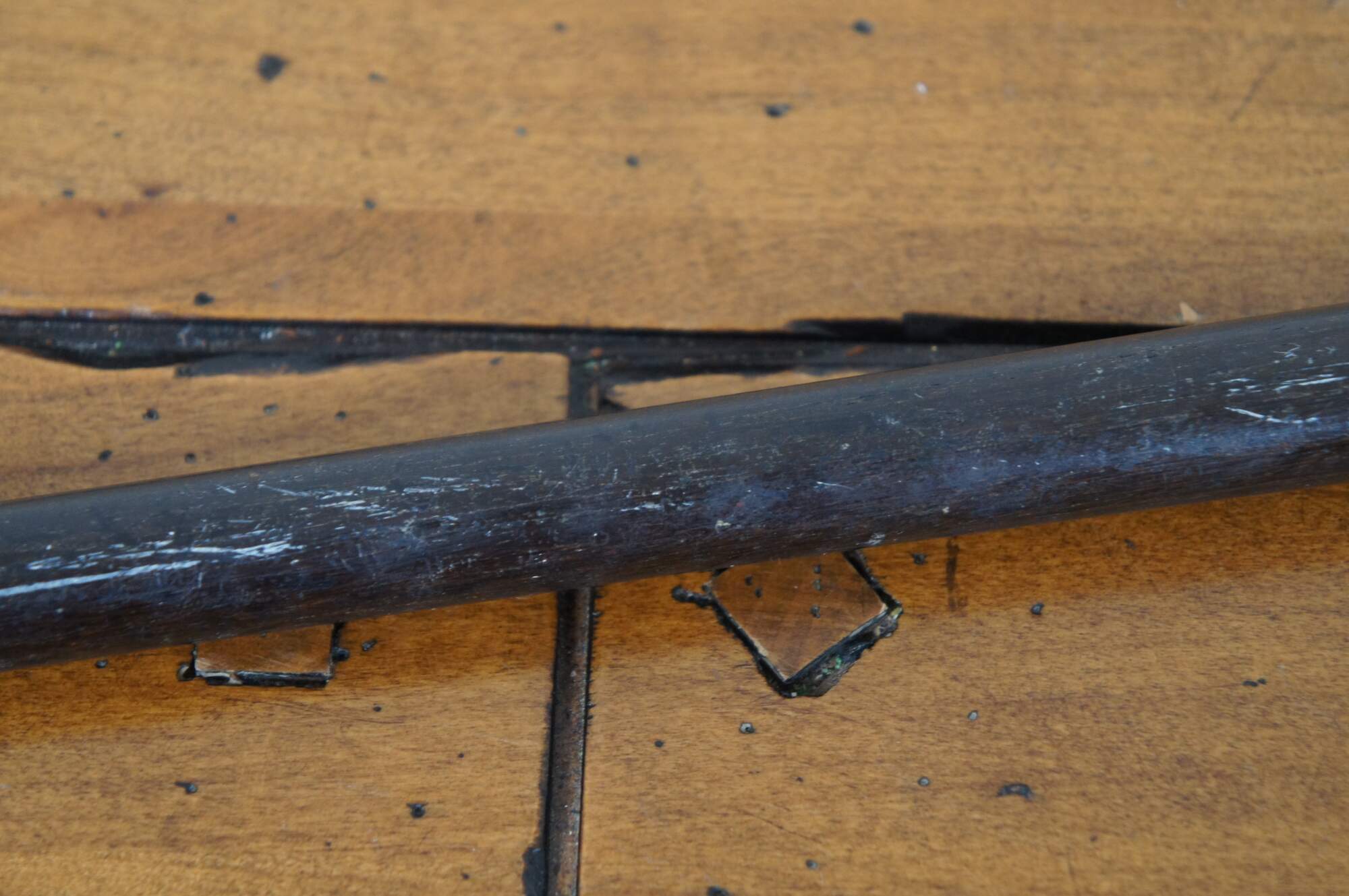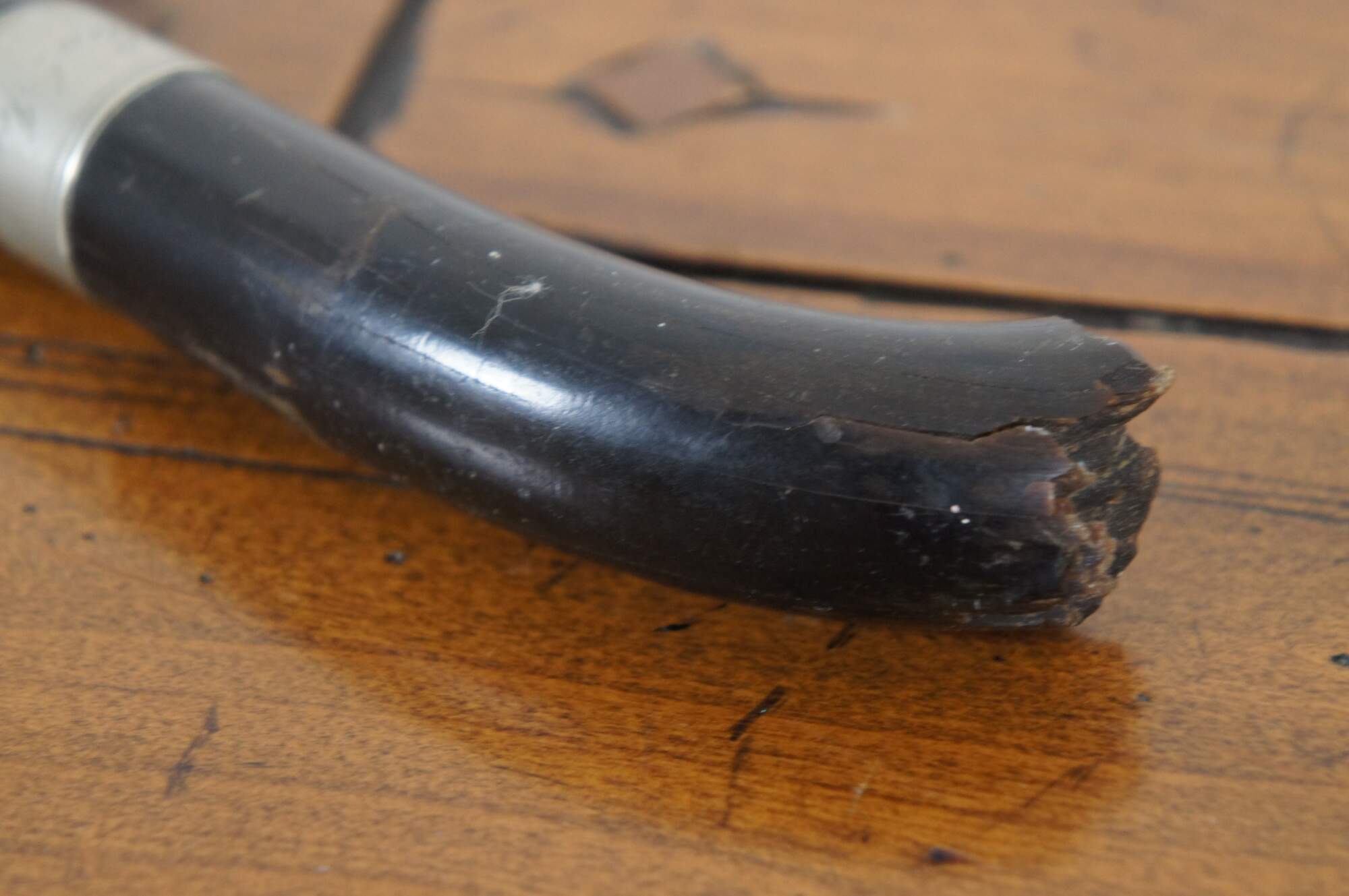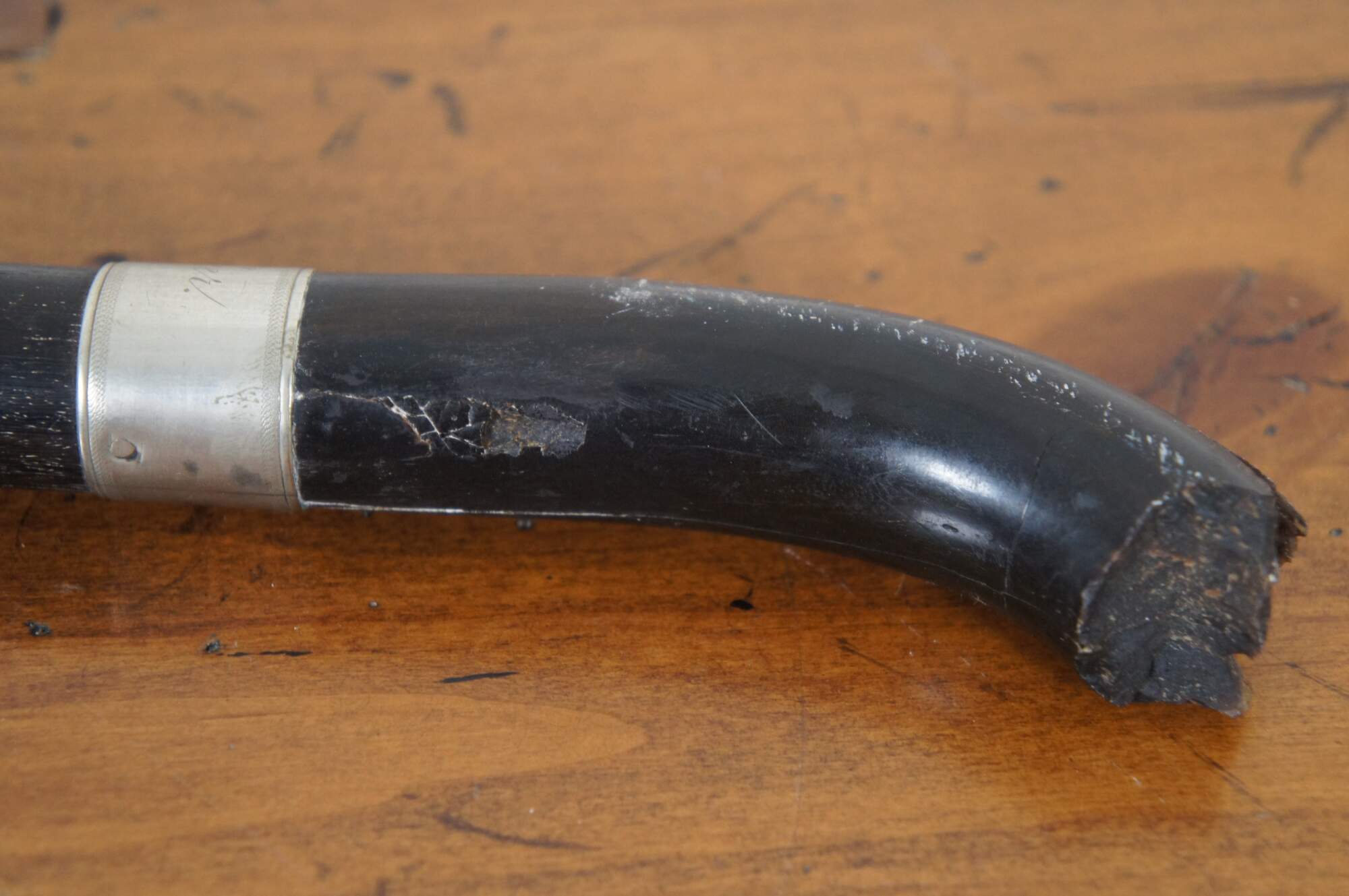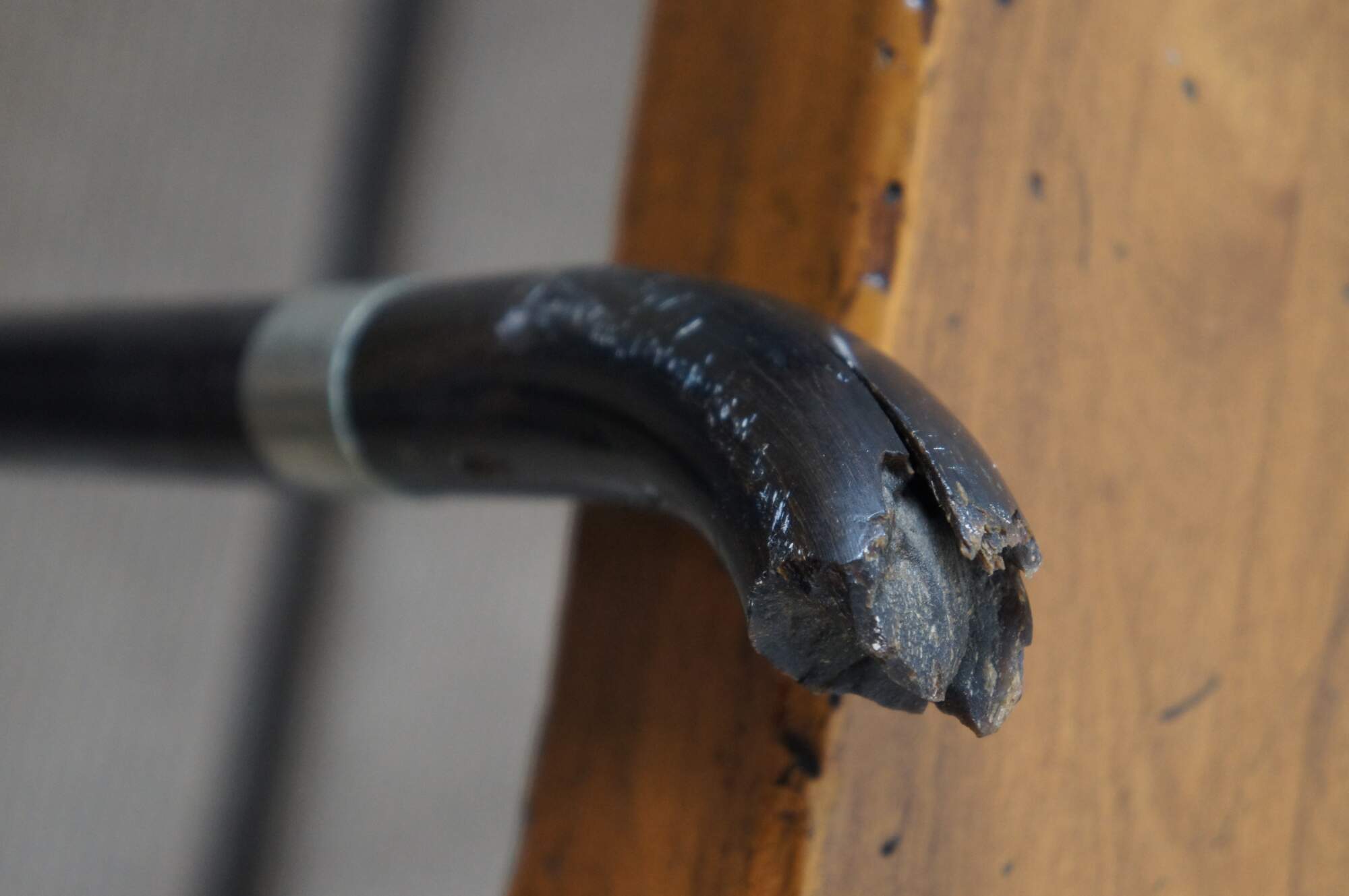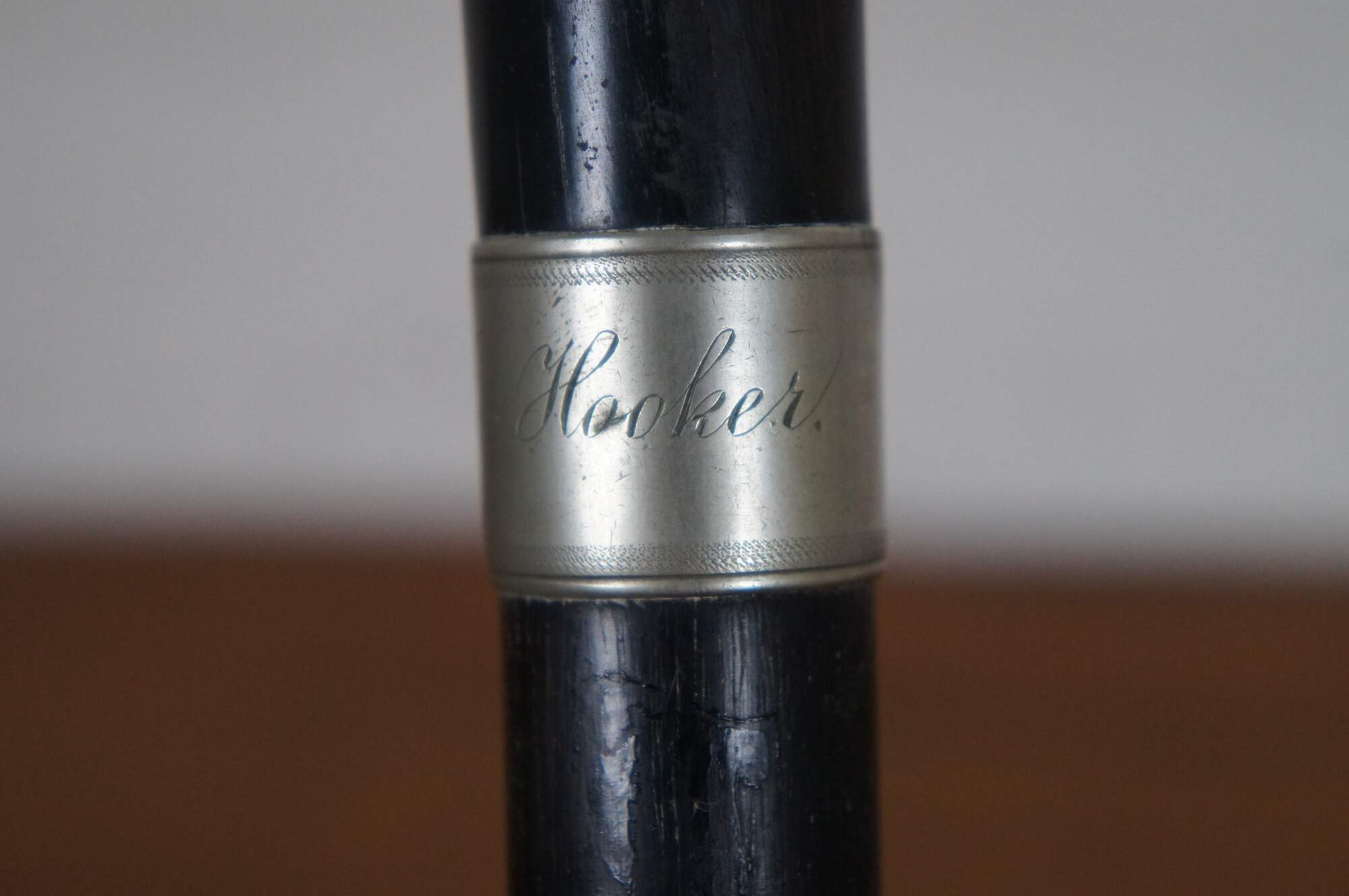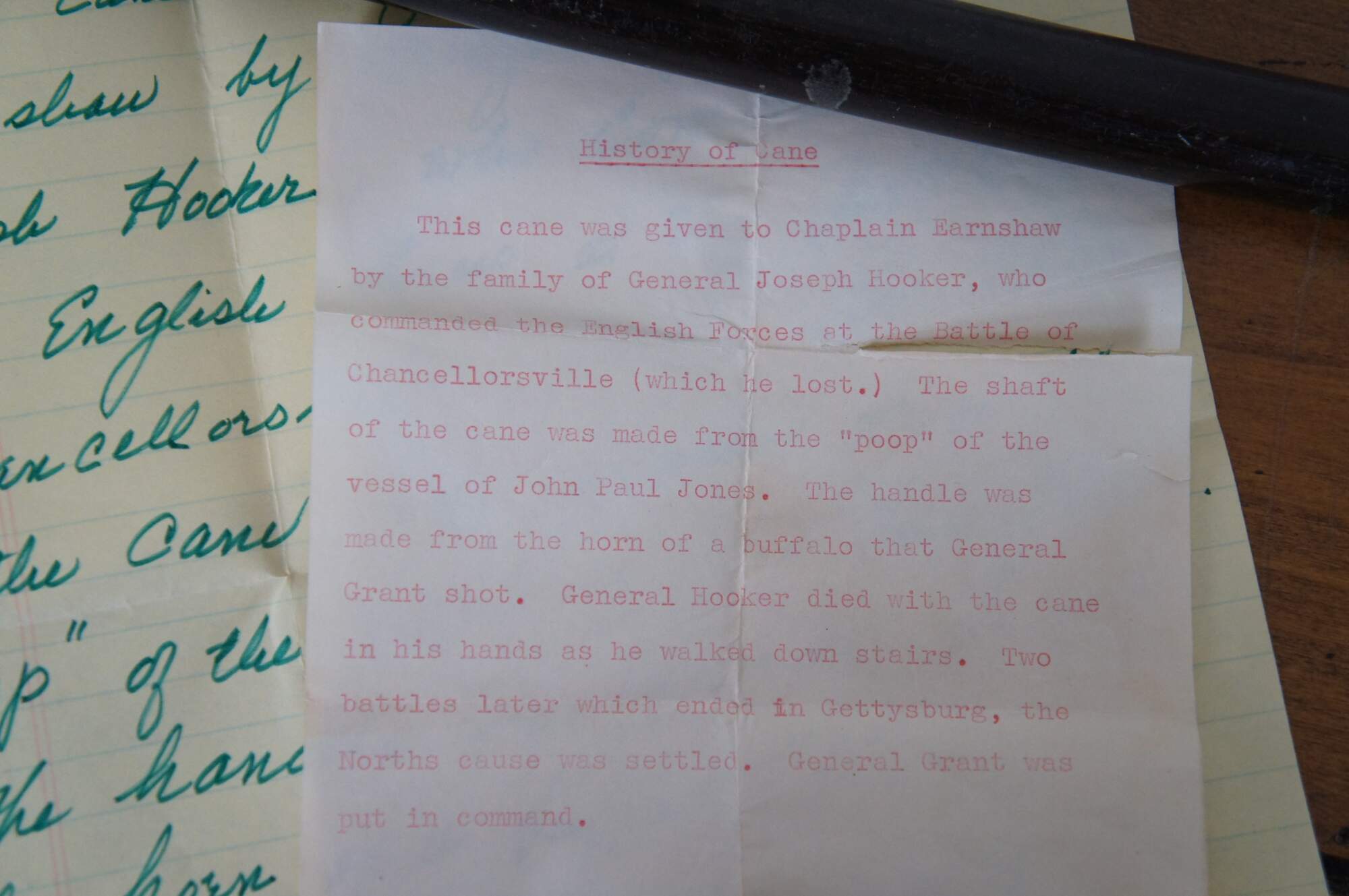
Historic Antique Civil War Walking Stick Cane of General Joe Hooker 35"
Sold
Shipping:
Free Shipping Included
Delivery:
Estimated 2-15 Business Days
Payments:
Credit Card, Check, Cash, PayPal, Apple Pay, Venmo
Returns:
30 Days 100% Money Back Guarantee, Buyer Pays Return Shipping
Description
Very rare antique 18th Century wood walking stick, staff or cane once owned by General Joe Hooker. Engraved silver band reads Gen. Joe Hooker.
A history of the cane is included which reads: “This cane was given to Chaplain Earnshaw by the family of General Joseph Hooker, who commanded the English Forces at the Battle of Chancellorsville (which he lost.) The shaft of the cane was made from the “poop” of the vessel of John Paul Jones. The handle was made from the horn of a buffalo that General Grant shot. General Hooker died with the cane in his hands as he walked down stairs. Two battles later which ended in Gettysburg, the Norths cause was settled. General grant was put in command.”
Province
Estate of J. Frederic Gagel, owner of multiple Thoroughbred race horses that competed in the Narragansett Special and Kentucky Derby. Their family heritage was strongly intertwined with the military having officers in battles dating back to the American Revolution.
John Paul Jones (born John Paul; July 6, 1747 – July 18, 1792) was a Scottish-American naval captain who was the United States' first well-known naval commander in the American Revolutionary War. He made many friends among U.S political elites (including John Hancock[1] and Benjamin Franklin[2]) as well as enemies (who accused him of piracy), and his actions in British waters during the Revolution earned him an international reputation that persists to this day. As such, he is sometimes referred to as the ""Father of the American Navy"" (a nickname he shares with John Barry and John Adams[3]).
Jones
Jones was born and raised in Scotland, became a sailor at the age of thirteen, and served as commander of several merchantmen. After having killed one of his mutinous crew members with a sword, he fled to the Colony of Virginia and around 1775 joined the newly founded Continental Navy in their fight against the Kingdom of Great Britain in the American Revolutionary War. He commanded U.S. Navy ships stationed in France, led one failed assault on Britain, and several attacks on British merchant ships. Left without a command in 1787, he joined the Imperial Russian Navy and obtained the rank of rear admiral.
Hooker
“Joseph Hooker (November 13, 1814 – October 31, 1879) was an American Civil War officer / general for the Union, chiefly remembered for his decisive defeat by Confederate General Robert E. Lee at the Battle of Chancellorsville in 1863.
Hooker had served in the Seminole Wars and the Mexican–American War, receiving three brevet promotions, before resigning from the Army. At the start of the Civil War, he joined the Union side as a brigadier general, distinguishing himself at Williamsburg, Antietam and Fredericksburg, after which he was given command of the Army of the Potomac.
His ambitious plan for Chancellorsville was thwarted by Lee's bold move in dividing his army and routing a Union corps, as well as by mistakes on the part of Hooker's subordinate generals and his own loss of nerve. The defeat handed Lee the initiative, which allowed him to travel north to Gettysburg.
Hooker was kept in command, but when General Halleck and Lincoln declined his request for reinforcements, he resigned. George G. Meade was appointed to command the Army of the Potomac three days before Gettysburg. Hooker returned to combat in November 1863, helping to relieve the besieged Union Army at Chattanooga, Tennessee, and continuing in the Western Theater under Maj. Gen. William T. Sherman, but departed in protest before the end of the Atlanta Campaign when he was passed over for promotion.
Hooker became known as ""Fighting Joe"" following a journalist's clerical error, and the nickname stuck. His personal reputation was as a hard-drinking ladies' man, and his headquarters were known for parties and gambling.
After the war, Hooker led Lincoln's funeral procession in Springfield on May 4, 1865. He served in command of the Department of the East and Department of the Lakes following the war. His postbellum life was marred by poor health and he was partially paralyzed by a stroke. He was mustered out of the volunteer service on September 1, 1866, and retired from the U.S. Army on October 15, 1868, with the regular army rank of major general. He died on October 31, 1879, while on a visit to Garden City, New York, and is buried in Spring Grove Cemetery, Cincinnati, Ohio,[6] his wife's hometown.
“William Earnshaw, D.D. (April 12, 1828 – July 7, 1885) was an American minister who served in the Union Army as a chaplain and as the 8th Commander-in-Chief of the Grand Army of the Republic, 1879-1880. Earnshaw was born on April 12, 1828 in Chester, Pennsylvania. Soon after the outbreak of the Civil War, he enlisted April 16, 1861 as a private in the 49th Pennsylvania Infantry and was mustered in as the regiment's chaplain with the rank of captain. Earnshaw resigned his commission on October 12, 1862 when the regiment was consolidated with another regiment. He was appointed a hospital chaplain in the U.S. Volunteers April 22, 1863 and remained in the service until August 27, 1867. With the necessity of creating national cemeteries, Ernshaw was superintendent of the construction of Stones River National Cemetery and Nashville National Cemetery. He was elected chaplain of the National Military Home in Dayton, Ohio on September 5, 1867 and held the post until illness forced him to retire. Earnshaw was Commander of the Ohio Department, Grand Army of the Republic in 1876, Junior Vice-Commander in 1877, and presided at the national encampment of the G.A.R. in Albany, New York in 1879, when he was elected to serve as the national organization's 8th Commander-in-Chief. He died July 7, 1885 in Dayton, Ohio and is buried there in Woodland Cemetery and Arboretum.” “The 49th Pennsylvania Volunteer Infantry was an infantry regiment that served in the Union Army during the American Civil War. The 49th Pennsylvania Infantry was organized in Lewistown and Harrisburg, Pennsylvania and mustered in September 14, 1861 at Camp Curtin for a three-year enlistment under the command of Colonel William H. Irwin. The regiment was attached to Hancock's Brigade, W. F. Smith's Division, Army of the Potomac, to March 1862. 1st Brigade, 2nd Division, IV Corps, Army of the Potomac, to May 1862. 1st Brigade, 2nd Division, VI Corps, Army of the Potomac, to February 1863. 3rd Brigade, 1st Division, VI Corps, to July 1864. 3rd Brigade, 1st Division, VI Corps, Army of the Shenandoah, to August 1864. Reserve Division, Department of West Virginia, to September 1864. 3rd Brigade, 1st Division, VI Corps, Army of the Shenandoah, to December 1864, and Army of the Potomac, to July 1865. The 49th Pennsylvania Infantry mustered out July 15, 1865.” “The National Asylum for Disabled Volunteer Soldiers was established on March 3, 1865, in the United States by Congress to provide care for volunteer soldiers who had been disabled through loss of limb, wounds, disease, or injury during service in the Union forces in the American Civil War. Initially, the Asylum, later called the Home, was planned to have three branches: in the Northeast, in the central area north of the Ohio River, and in what was then considered the Northwest, the present upper Midwest.” “At the end of the Civil War, the country faced the unprecedented challenge to care for the thousands of disabled veterans who fought to preserve the union. The answer: soldiers’ homes constructed on a scale unseen in America. Among the very first was built in Dayton. The campus became not only a destination for recovering soldiers, but for patriotic tourists who came from far away to pay their respects to the veterans and take in the spectacle of the ornate architecture and grand gardens. The central branch of what became the National Home for Disabled Volunteer Soldiers on Dayton’s west side opened its gates to the first veterans in the fall of 1867, two years after the end of the Civil War.”""
Condition
Good Overall - Some scuffs/scrapes/small splits; damage to handle.
Dimensions
1” x 35.25” (Diameter x Height)
